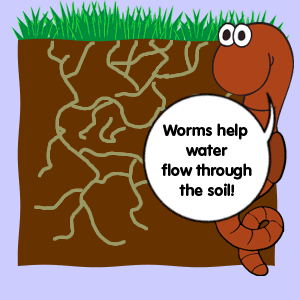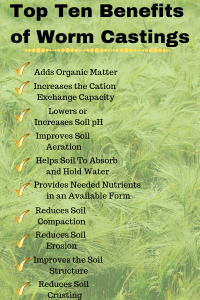Everything about North Carolina Worms
Table of ContentsThe Single Strategy To Use For North Carolina WormsThe Basic Principles Of North Carolina Worms Getting My North Carolina Worms To WorkNorth Carolina Worms Can Be Fun For Anyone
Instance: 1-gallon of worm castings to 4 gallons of potting mix. 1/2 cup in the bottom of the planting opening for smaller plants. 1 cup for larger plants.
The addition of tea can additionally include enhanced microbial biomass to your dirt. You can constantly side-dress your plants with worm castings at any moment. Just remember, the microbes will pass away if subjected to UV rays (Sunlight), so be sure to cover the castings with an inch or two of soil.
This frustrated them for many years till the testing methods came to be better. They located that plant growth and wellness exhibited a Normal curve. It would get much better(with more spreadings), level off, and after that decrease. They were mystified. They ultimately uncovered that excess plant-growth hormones were the wrongdoer. Way too many worm castings would certainly accelerate the growth to a rate that the plant could not recuperate from.
More About North Carolina Worms
I have stated the virtues of worm spreadings for regarding 2000 words. Worm castings are no different. It takes time to create quality worm spreadings.
Worm spreadings definitely set you back more than chemical fertilizers. Worm spreadings are on the less expensive end of natural fertilizers. (50 gallons per year) It is a much harder and extremely pricey financial investment to produce big quantities of worm spreadings.

Producing a healthy and balanced soil might be the greatest advantage of worm castings. We went over worm castings NPK and likewise the proper nutrient analysis that must use to worm castings.
The 25-Second Trick For North Carolina Worms
We spoke regarding some of the disadvantages associated with worm castings. I covered a lot of material in this article.
The vertical burrows are generally open, although the worms top the top with residue and excrement. The upright burrows are really vital factors of access for fast water infiltration into the soil, specifically in no-till systems. Air-filled porosity is essential in helping plant origins to grow. Origins require oxygen for their growth, whereas they produce carbon dioxide that requires to leave the dirt.
Earthworms increase porosity by 2 devices: (1) by producing permanent burrows, and (2) by improving dirt aggregation. Aggregation is boosted by the blending of soil and raw material in the earthworms' digestive tracts. Lake Hickory Bait. These extremely stable accumulations are deposited by some earthworms in their burrows, and by others at the surface of the dirt


In one more research study, earthworms were approximated to take in 4 to 10 percent of the leading 6 inches of the dirt each year. Dirt compaction lowers the porosity of the dirt.
Some Known Factual Statements About North Carolina Worms
Typical earthworm populaces can conveniently take in 2 lots of dry issue per acre each year, partly digesting and blending it with soil. The significance of earthworms to mix surface area residue with soil comes to be extremely clear in soils that do not have any kind of earthworms. A lot of our Pennsylvania soils contend least some earthworms, and the result of their full lack, therefore, can not be kept in mind.
(https://www.bedirectory.com/North-Carolina-Worms_388865.html)In these dirts, the formation of topsoil with reasonable raw material content did not occur, leading to bad crop growth. Once the cause was established, the government of the Netherlands began a project to present earthworms. After the intro of the earthworms, a dark topsoil layer was created, and plant growth enhanced significantly.
They live mainly from partially broken down organic matter that is currently included in the dirt. They eat their way via the dirt, producing horizontal burrows that they fill with their waste matter. These varieties consume big amounts of dirt that they blend with digested crop deposit in their digestive tracts. or anecic species live in irreversible upright burrows that can be 5 or 6 feet deep.
Their burrows remain open, although they cover the top with plant residue that they pull to the entry. These varieties ingest considerable quantities of soil that they blend with absorbed residue in their intestines. Their waste matter is primarily transferred at the surface of the dirt. The nightcrawler Lumbricus terrestris is the most prominent participant of this group.